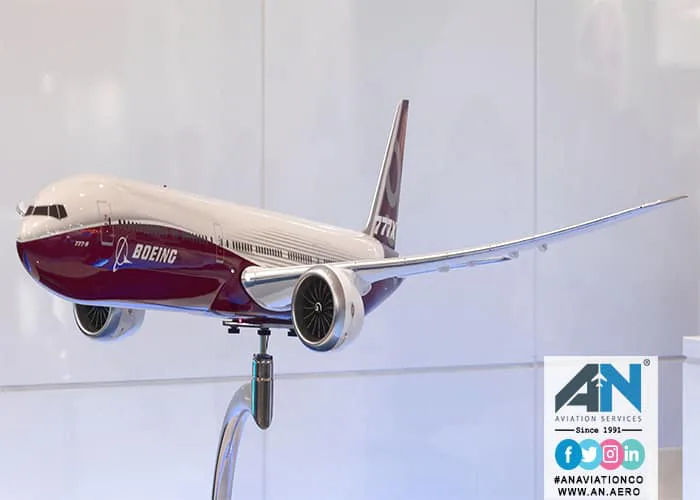
The coronavirus pandemic has forever changed the landscape of the airline industry. Once a thriving and interconnected web of global travel, airlines faced unprecedented challenges in the wake of the pandemic. From grounded fleets and plummeting passenger numbers to revenue losses reaching billions, the numbers tell a story of survival, adaptation, and eventual recovery.
The airline industry, a lifeline of global mobility, was one of the hardest-hit sectors during the COVID-19 crisis. However, by examining these impacts numerically, we gain a clearer understanding of how the pandemic reshaped air travel—and what the future might hold.
The Collapse in Passenger Numbers
Before the coronavirus, the skies were bustling with over 4.5 billion passengers annually, an all-time high in 2019. However, when the pandemic struck in early 2020, air travel came to a screeching halt. Governments worldwide imposed travel restrictions and lockdowns, leading to an astounding 60-70% decline in passenger numbers within just a few months.
By the end of 2020, global passenger numbers had fallen to just 1.8 billion, effectively erasing over a decade of growth in the aviation sector. Domestic air travel was slightly more resilient, with countries like China and the United States leading the way in early recovery. Meanwhile, international flights—heavily dependent on open borders—suffered the most dramatic decline.
Revenue Losses in the Billions
The economic fallout for airlines was just as severe. According to the International Air Transport Association (IATA), the pandemic caused airlines to lose a staggering $370 billion in revenue in 2020 alone. This figure accounted for over 60% of the industry’s pre-pandemic revenue.
With planes grounded and demand at historic lows, major airlines faced liquidity crises and mounting operational costs. For many, government bailouts and financial aid were the only way to survive. Even as recovery efforts began in 2021, revenue figures for most airlines remained well below pre-pandemic levels.
Job Losses in the Industry
The human cost of the pandemic was also significant. Airlines and aviation-related industries, including airports and ground services, collectively laid off or furloughed millions of workers worldwide. By the end of 2020, an estimated 4.8 million aviation jobs were lost.
Flight attendants, pilots, and ground staff were among the hardest hit, with airlines scaling back operations and reducing the size of their fleets. Although some airlines rehired staff as recovery began, the workforce in many regions has yet to return to pre-pandemic levels.
The Rise of Cargo Amid the Crisis
While passenger air travel suffered, the air cargo industry became a rare bright spot for airlines. The pandemic triggered an unprecedented demand for the transport of medical supplies, personal protective equipment (PPE), and vaccines.
In 2020, air cargo revenue grew by over 15%, reaching $117 billion, as airlines pivoted to meet the demand for moving goods quickly and efficiently. Some passenger aircraft were even converted into cargo planes, demonstrating the industry’s adaptability in challenging times.
Changes in Flight Operations
The number of flights operated daily dropped drastically in 2020, with many airlines reducing their schedules by as much as 80% during the peak of the pandemic. By mid-2021, flight activity had recovered to approximately 50% of pre-pandemic levels, but this was unevenly distributed:
- Domestic routes saw faster recovery, especially in countries like the United States and China, where demand for travel within borders remained steady.
- International routes, on the other hand, lagged behind due to strict border controls and quarantine requirements.
The Impact on Fleet Utilization
Before the pandemic, global airlines operated approximately 26,000 commercial aircraft. By mid-2020, more than 16,000 planes were parked on runways and storage facilities worldwide due to a lack of demand.
The long-term impact of this downtime led airlines to retire older, less fuel-efficient models such as the Boeing 747 and Airbus A380 earlier than planned. This shift accelerated the transition toward more modern, fuel-efficient aircraft like the Boeing 787 and Airbus A350, which promise lower operational costs and reduced environmental impact.
Financial Aid and Bailouts
To prevent the collapse of the aviation sector, governments worldwide provided substantial financial support. The United States alone allocated over $60 billion in aid to its airlines, ensuring the survival of major carriers like American Airlines, Delta, and United Airlines.
Across Europe, countries such as Germany, France, and the UK stepped in with similar bailout packages, allowing flagship carriers like Lufthansa and Air France-KLM to weather the storm.
Vaccine Rollouts and the Path to Recovery
The rollout of vaccines in late 2020 and early 2021 marked a turning point for the aviation industry. As more countries vaccinated their populations, passenger confidence began to return. Airlines introduced flexible booking policies and enhanced safety measures to reassure travelers, including advanced air filtration systems and rigorous cleaning protocols.
However, recovery has been uneven:
- In 2021, domestic air travel recovered to approximately 60-70% of pre-pandemic levels, while international travel lagged behind at around 40-50%.
- Regions like Asia-Pacific and Europe have seen slower recoveries compared to North America, largely due to varying travel restrictions and vaccination rates.
The Future of the Airline Industry
The pandemic has permanently altered the aviation landscape. Airlines are now focusing on resilience and adaptability to prepare for future crises. Key trends include:
- Digital Transformation: Enhanced online booking systems, biometric check-ins, and contactless technology are becoming standard across the industry.
- Sustainability Efforts: Airlines are accelerating the adoption of sustainable aviation fuels (SAF) and modern aircraft to reduce carbon emissions.
- Flexible Business Models: Hybrid approaches to passenger and cargo services are gaining traction as airlines seek to diversify revenue streams.
Conclusion
The coronavirus pandemic brought the aviation industry to its knees, but it also highlighted the sector’s resilience and ability to adapt. From massive revenue losses and grounded fleets to the rise of air cargo and the shift toward sustainability, the impact of the pandemic will be felt for years to come.
As the world continues to recover, the lessons learned during this challenging period will shape the future of air travel, ensuring the industry emerges stronger, more efficient, and better prepared for whatever lies ahead.





